8 Best Low Light Camera Choices
Photos taken in failing light often result in a lot of wasted shots, but it doesn’t have to be that way. My guide looks at some of the best low light camera options around. Keep reading if you want to produce stunning images when the light levels fall. Low-light photography can be truly captivating when done the right way. It’s a different world to the harsh, washed-out images produced by popup flash.
| Budget |
|---|
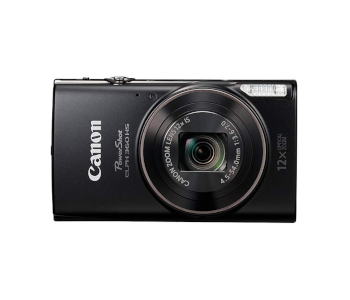 |
| Canon PowerShot ELPH 360 |
| 4.4/5.0 |
| Max ISO: 3200 |
| Sensor: 20.2MP |
| Small and light, optical stabilization, filter settings, macro mode, decent video. |
| Check Amazon |
| Best Value |
|---|
 |
| Nikon D5600 DSLR |
| 4.6/5.0 |
| Max ISO: 25600 |
| Sensor: 24MP |
| Swivel touchscreen, fast sharing, smartphone control, manual mode. |
| Check Amazon |
| Top Pick |
|---|
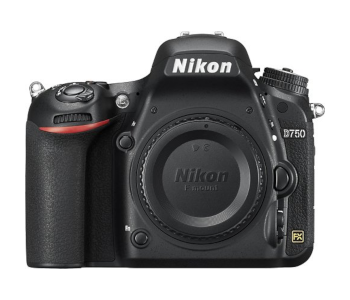 |
| Nikon D750 Digital SLR |
| 4.8/5.0 |
| Max ISO: 12800 |
| Sensor: 24MP |
| Incredible details, swivel screen, dual SD slots, pro video features, WiFi. |
| Check Amazon |
The Beauty of Low Light Photography
Taking photos or shooting videos in low light used to be a niche interest and quite tricky. There was also a lot of trial and error and post-editing involved. It’s not so complicated anymore. Modern cameras have functions that can take multiple low-light shots at different exposures. You still need some imagination and a little patience in some cases. But the tools are there for those who want them.
Choosing a Low-light Capable Camera
Use this introduction to create your checklist of wants and needs. I don’t go into all the technicalities here, so it’s a good idea to do a little research on any item you’re unsure of. However, there are 5 buying considerations that all novice shoppers should be familiar with:
- Sensor size matters
- Lenses and apertures
- Image stabilization
- ISO Sensitivity
- RAW shooting
We’ll now look at each consideration in a little more detail.
#1 Why Sensor Size Matters
#2 Lens Choice and Apertures
#3 Image Stabilization
#4 ISO sensitivity
#5 RAW Shooting
Other Camera Specs to Consider
OK, these are some of the main considerations when shopping for a camera with low light capabilities. Make sure you add other wants and needs to your product shortlist too. They may include budget, camera heft, and the available lenses along with other accessories. Consider the ease-of-use if you’re a novice, and the product feedback from camera owners.
About My Best Low Light Camera’ Guide
There are 8 low-light-capable camera reviews in this guide. I’ve looked over dozens of options, so these are the result of extensive research. Every model here is a worthy contender in its class. The first 3 are my Best Budget low-light camera, then the Best Value, and the Top pick. I’ve arranged the reviews below the first three in price order from lowest to high.
Low Light Cameras Comparison Table
| Make and Model | Max ISO | Sensor | Battery Life | Price |
|---|---|---|---|---|
| Canon PowerShot ELPH 360 Camera | 3200 | 20.2MP | 180 shots | Check Price |
| Nikon D5600 DX-Format DSLR Camera | 25600 | 24MP | 820 shots | Check Price |
| Nikon D750 FX-format Digital SLR | 12800 | 24MP | 1230 shots | Check Price |
| Google Pixel 3A Low-Light Camera Phone | N/A | 12.2MP | 7 hours | Check Price |
| Canon PowerShot G7 X Mark II | 12800 | 20.1MP | 265 shots | Check Price |
| PANASONIC LUMIX ZS200 W/ 15X Lens | 12800 | 20MP | 370 shots | Check Price |
| Nikon Z6 FX-Format Mirrorless Camera | 51200 | 25MP | 330 shots | Check Price |
| Sony a7R III Mirrorless Camera | 32000 | 42MP | 650 shots | Check Price |
1. Canon PowerShot ELPH 360 Camera | Best Budget
Editor’s Rating: 4.4/5
The Best budget low-light camera pick goes to the Canon PowerShot ELPH 360. It’s a brilliant little product that’s easy to use and comes with a host of user-friendly features.
- Best feature 1: Superb low light performance without flash
- Best feature 2: Optical zoom (12x)
- Plus points: Small and light, optical stabilization, filter settings, macro mode, decent video
- Minus points: Low-average battery life, LCD hard to see outdoors
Canon PowerShot ELPH 360 Highlights
Consider the PowerShot ELPH 360 if you want a quality small-sized, travel-friendly compact camera. It has built-in Wi-Fi and NFC connectivity for quick and easy sharing. The ‘Nighttime’ mode lets you take low light photos without flash at slower shutter speeds. This model has an optical image stabilizer (IS) that’s invaluable for close-up macro photography.
The 12x optical zoom capability brings spontaneous and far away shots within reach. And the camera’s Powered IS compensates handheld telephoto shots. Another exciting feature is the Creative Shot mode and the various filter settings. It works by saving 5 artistic copies of the original image. Canon’s little ELPH can capture impressive 1080p videos with the single press of its movie button.
The Not So Good
The battery life is average at best, especially when shooting video. You can expect around 180 shots on a single charge for photos. New batteries are also quite expensive for a compact camera, but they’re a must-have extra for a lot of owners. The LCD screen loses visibility in bright sunlight and becomes hard to read. Not having a built-in viewfinder exacerbates the dim LCD issue.
| Tech Specs |
|---|
| Brand: Canon |
| Camera Type: Point & Shoot |
| Sensor Size: 20.2MP CMOS |
| Video Resolution: 1080p |
| Zoom: 12x 2optical |
| Max Aperture: F3.6-7.0 |
| Image Stabilization: Yes |
| Max ISO: 3200 |
| Video Resolution: 1920 x 1080 |
| RAW Support: No |
| Max Shutter Speed: 1/2000s |
| Headphone Port: None |
| Card Storage: SD/SDHC/SDXC |
| Battery Life: 180 shots |
| Articulating Screen: No |
| Camera Weight: 4.6 oz. |
| Dimensions: 4.4 x 3.1 x 2.6” |
| Warranty: 1 year |
| The Pros |
|---|
| Small and lightweight |
| Low light photography w/o flash |
| Built in Wi Fi & NFC |
| 12x optical zoom |
| Optical image stabilization |
| 46 filter options |
| Close-up (macro) mode |
| 1080p full-HD video |
| Dedicated movie button |
| Story Highlights feature |
| Excellent value |
| The Cons |
|---|
| Low average battery life |
| Hard to read LCD in bright light |
| No built-in viewfinder |
2. Nikon D5600 DX-Format Digital SLR | Best Value
Editor’s Rating: 4.6/5
Nikon’s popular D5600 DSLR gets the Best Value slot. It’s a superb choice for photographers at the advanced beginner and beyond levels. The camera boasts more than 25 user-friendly features.
- Best feature 1: Night Landscape mode
- Best feature 2: Long battery life
- Plus points: Swivel touchscreen, fast sharing, smartphone control, manual mode, full-HD video
- Minus points: No image stabilization, no weather sealing, large body
Nikon D5600 DX-Format DSLR Highlights
High-quality photo is a given with Nikon’s D5600. This camera is a low-noise, low-light powerhouse that boasts exceptional autofocus (AF) and a max ISO of 25600. There’s also the expanded 6400 ISO sensitivity in Night Landscape mode. That lets you capture otherwise impossible handheld shots in challenging light. And there’s always the built-in flash should you need to lighten dark shadows.
The Nikon D5600 is a versatile camera that should keep going all day on a single charge. Its bright vari-angle touchscreen offers Pinch, Swipe, and Zoom simplicity. Sharing photos is quick and painless with the SnapBridge Bluetooth app. You can use any smartphone as the camera’s remote control and to compose shots. There’s also a plethora of exciting tools in the D5600’s full manual mode.
A Truly Versatile Digital-SLR
Nikon D5600 has something for everyone. The interchangeable lens capability, auto and manual shooting modes, and ease-of-use let you choose how the camera works for you. And videographers are sure to love the suite of enhanced video features. Check out some of the online examples of the D5600’s full HD 1080p recording if video is on your priority list.
The Not So Good
This camera doesn’t have in-body sensor-based stabilization. New owners who want image-stabilizing technology must invest in Nikon’s optically stabilized lenses. There are more than 100 to choose from, but they cost more than the non-stabilized optics. The D5600 doesn’t have any environmental sealing, so all-weather photographers must take extra care. The body is also quite big for smaller hands.
| Tech Specs |
|---|
| Brand: Nikon |
| Camera Type: DSLR |
| Sensor Resolution: 24.0MP |
| Video Resolution: FHD 1080p |
| Max Aperture: F/3.5-5.6 |
| Image Stabilization: None |
| Max ISO: 25600 |
| RAW Support: Yes |
| Max Shutter Speed: 1/4000 sec |
| Flash Sync Port: Yes |
| Card Storage: UHS-1 |
| Battery Life: 820 shots |
| Swivel Screen: Yes |
| Camera Weight: 25.6 oz. |
| Dimensions: 5.5 x 3.2 x 4.5” |
| Warranty: 1 year |
| The Pros |
|---|
| Truly versatile camera |
| Interchangeable lens capability |
| Night Landscape mode |
| Built-in flash |
| Long, all-day battery life |
| Vari-angle Swivel touchscreen |
| Fast sharing with SnapBridge |
| Smartphone control |
| Full manual mode |
| Enhanced video features |
| Free cloud storage |
| The Cons |
|---|
| No image stabilization |
| No environmental sealing |
| Large body for small hands |
3. Nikon D750 FX-format DSLR Camera | Top Pick
Editor’s Rating: 4.8/5
Another Nikon makes the top three slot. This one is its D750 FX-format Digital-SLR, first introduced in 2014. The camera has stood the test of time and continues to be a popular choice.
- Best feature 1: Superior low-light performance
- Best feature 2: Fast, accurate autofocus (AF)
- Plus points: Incredible details, swivel screen, dual SD slots, pro video features, WiFi
- Minus points: Loud shutter, poorly located ISO button
Nikon D750 Digital-SLR Highlights
Nikon’s D750 FX-format DSLR is not cheap, but it sells well for a camera in its class. It can track fast-moving subjects just as well in low light as it can in bright conditions. The superior low light performance and low image noise get plenty of mention from owners. Another loved feature is the 3.2” vari-angle LCD screen. You can also control the camera with a regular smartphone or tablet.
The body is compact and lightweight considering how much Nikon has packed in. A 24MP sensor gives incredible photographic details without insane file sizes. Other highlights are dual SD memory card slots, pro video features, built-in WiFi, and remote control. The great thing about this camera is that it can be as straightforward or as complex as you need it to be.
The Not So Good
The shutter on this camera is reliable and made to last, but it’s embarrassingly loud. It’s something to think about if you need to photograph at venues where silence must be observed. Another con is the location of the ISO button that sits just under the Quality button. It’s easy to hit and change the settings by accident. That’s an obvious flaw that Nikon’s design engineers failed to pick up.
Lastly, this camera doesn’t have in-body image stabilization. However, Nikon does have an extensive range of lenses to choose from that have built-in optical stabilization (OS).
| Tech Specs |
|---|
| Brand: Nikon |
| Camera Type: DSLR |
| Sensor Size: 24MP full-frame |
| Video Resolution: FHD 1080p |
| Max Aperture: N/A (body only) |
| Image Stabilization: None |
| Max ISO: 12800 |
| RAW Support: Yes |
| Max Shutter Speed: 1/4000 sec |
| Headphone Port: Yes |
| Flash Sync Port: Yes |
| Card Storage: UHS-I |
| Battery Life: 1230 |
| Articulating Screen: Yes |
| Camera Weight: 26.4 oz. |
| Dimensions: 5.5 x 3.1 x 4.5” |
| Warranty: 1 year |
| The Pros |
|---|
| Compact, lightweight body |
| Deep, comfortable hand grip |
| Decent battery life |
| Easy to customize and use |
| Superior low-light performance |
| Fast, accurate autofocus (AF) |
| Flawless image details |
| Exceptional dynamic range |
| Smooth, vari-angle swivel screen |
| Dual SD memory card slots |
| Pro video features |
| Built-in WiFi connectivity |
| The Cons |
|---|
| Overly loud shutter |
| Poorly located ISO button |
| No in-body stabilization |
4. Google Pixel 3A Low-Light Camera Phone
Editor’s Rating: 4.7/5
Meet the Google Pixel 3a. No modern camera guide would be complete without including one or two smartphones. That’s because their cameras have come such a long way in recent years.
- Best feature 1: Night Sight low-light shooting mode (no flash)
- Best feature 2: Exceptional image quality
- Plus points: Super-fast charging, headphone jack, fingerprint reader, unlimited storage
- Minus points: Average battery life, no wireless charging, tiny icons
Google Pixel 3A Camera Phone Highlights
The quality of the photos is undoubtedly the best feature on the Google Pixel 3a. It’s especially appreciated for its Night Sight that lets you capture clear details and vibrant colors in low light. Night Sight takes stunning photos without the need for harsh, washed-out flash, and that’s the point. This smartphone charges super-fast (15 minutes), though its battery life is somewhat exaggerated.
Headset users welcome the phone’s headphone jack. The fast, reliable fingerprint reader is another standout feature. Lastly, the Pixel 3a has free, unlimited storage provided by Google Photos.
The Not So Good
Google should have come up with a better battery life than its Pixel 3a offers. Even some of the older phones go for much longer on a single charge than this one. At least it doesn’t suffer from long charging times. A lesser gripe is that there’s no wireless (inductive) charging. Another con is the teeny status bar icons as the top of the screen. There’s no way to customize them either.
| Tech Specs |
|---|
| Brand: Google |
| Camera Type: Smartphone (single) |
| Video Resolution: 4K UHD |
| Image Stabilization: Optical |
| Headphone Port: Yes |
| Card Storage: None |
| Internal Storage: 64GB (not expandable) |
| Battery Life: Approx. 7 hours |
| Screen Size: 5.6 |
| Screen Protection: Dragontrail |
| Resolution: 1080 x 2220px |
| Camera Weight: 5.1 oz. |
| Dimensions: 6 x 2.8 x 0.3” |
| Warranty: 1 year |
| The Pros |
|---|
| Sleek, comfortable to handle |
| Night Sight low-light shooting |
| 3 years of OS Updates |
| Exceptional image quality |
| Super-fast charging |
| Headphone jack |
| Reliable fingerprint reader |
| Unlimited storage |
| Excellent value |
| The Cons |
|---|
| Average battery life |
| No wireless charging |
| Tiny status bar icons |
5. Canon PowerShot Point & Shoot G7 X Mark II
Editor’s Rating: 4.6/5
Those looking for a high-end compact camera will want to shortlist the Canon PowerShot G7 X Mark II. It has over 24 outstanding features and only a handful of negatives, but are they deal breakers?
- Best feature 1: Competent low light performance
- Best feature 2: Exceptional build quality
- Plus points: Small and light, zoom lens, wide aperture, tilting screen, fast AF, superb video
- Minus points: Short battery life, quite heavy, shallow grip
Canon PowerShot G7 X Mark II Highlights
The build quality of the G7 X Mark II is about as good as it gets for a pocket-sized product. It feels comfortable to hold and is super-easy to use at any level. This little camera excels in all areas of photography. Its low light capability surprises many users, especially less experienced photographers. That’s helped by its 1” 20.1MP sensor, fast f/1.8 wide aperture, and quick autofocus.
Canon’s PowerShot G7 X Mark II sports a 24–100mm zoom lens. Its tilting LCD touchscreen makes taking shots at awkward angles a breeze. Tilt screens are invaluable for street photography and selfies. The image quality and the color rendition produced by this camera is exceptional. It’s FHD 1080p video is also admirable, though the built-in mic much less so. There’s no external mic port, either.
The Not So Good
Some cameras excel with battery life, others fail miserably, and most sit somewhere between the two. Unfortunately, the PowerShot G7 X Mark II is below average, with only 265 shots on a single charge. The camera is small and compact, but its metal build does make it heavy at 1.4 lbs. Some users may find its heft and shallow grip uncomfortable to hold for extended periods.
| Tech Specs |
|---|
| Brand: Canon |
| Camera Type: Compact |
| Zoom: 4.2x optical |
| Sensor Size: Large, 1″ 20.1MP |
| Video Resolution: FHD 1080p |
| Max Aperture: F1.8-2.8 |
| Image Stabilization: Yes |
| Max ISO: 12800 |
| RAW Support: Yes |
| Max Shutter Speed: 1/2000 sec |
| Flash Sync Port: Xxx |
| Card Storage: UHS-I |
| Battery Life: 265 shots |
| Articulating Screen: Tilt & Touch |
| Camera Weight: 22.4 oz. |
| Dimensions: 1.6 x 2.4 x 4.2” |
| Warranty: 1 year |
| The Pros |
|---|
| Small and lightweight |
| Exceptional build quality |
| Competent low light performance |
| Wide–telephoto zoom lens |
| Wide fast aperture |
| Tilting LCD touchscreen |
| Intuitive menus |
| Fast, accurate AF |
| Superb video quality |
| The Cons |
|---|
| Below-average battery life |
| Heavy for its size |
| Shallow hand grip |
6. PANASONIC LUMIX ZS200 W/ 15X Leica Lens
Editor’s Rating: 4.3/5
The Panasonic DC-ZS200 is another feature-packed, large sensor high-end compact camera. It has a trim design and an intuitive LCD touchscreen for quick fingertip control.
- Best feature 1: Impressive low light shooter
- Best feature 2: 5-axis stabilization
- Plus points: Easy camera to use, fast autofocus, 10fps, 4K video, WiFi & Bluetooth
- Minus points: No flip screen, slowish lens, shallow grip
PANASONIC LUMIX ZS200S Highlights
It’s a small, comfortable pocket-sized camera with big performance. Panasonic’s DC-ZS200 boasts a 20.1MP 1” low-light sensor. Large sensors have much better light-gathering capability, and this one is astonishing. Lenses also play a huge role in image quality, whatever the light conditions. This puppy comes with a 15x wide-angle to telephoto LEICA DC Vario-Elmar lens.
The camera’s equipped with 5-axis stabilization that does a great job of keeping handheld shots sharp. Its fast autofocus and 10fps (frames per second) captures those fast-moving candid moments. Users can take tack-sharp, 20MP stills and record 4K and HD video. And file sharing is fast and easy with the built-in WiFi and low-energy Bluetooth connectivity.
The Not So Good
The LUMIX ZS200 doesn’t have a flip screen. That may be a deal-breaker for those who regularly shoot at unusual and tricky angles. A tilting screen is also a vital feature for selfies. This camera takes impressive photos in low light, but the slow f/3.3 lens hinders its potential a little. Lastly, some may find the shallow grip awkward when handling the camera for extended shoots.
| Tech Specs |
|---|
| Brand: Panasonic |
| Camera Type: Compact |
| Sensor Size: 20.0MP |
| Zoom: 15x optical |
| Max Aperture: F3.3-6.4 |
| Image Stabilization: Yes |
| Video Resolution: 4K |
| Max ISO: 12800 |
| RAW Support: Yes |
| Max Shutter Speed: 1/2000 sec |
| Card Storage: SD/SDHC/SDXC |
| Battery Life: 370 |
| Articulating Screen: No |
| Camera Weight: 11.99 oz. |
| Dimensions: 4.4 x 1.8 x 2.6” |
| Warranty: 1 year |
| The Pros |
|---|
| Neat, ergonomic design |
| Excellent low light performance |
| Live viewfinder |
| Creative controls |
| 5-axis stabilization |
| Fast autofocus technology |
| Captures 10fps |
| Records 4K and HD video |
| WiFi & Bluetooth connectivity |
| The Cons |
|---|
| No flip screen |
| Slowish lens |
| Shallow grip |
7. Nikon Z6 FX-Format Digital Mirrorless Camera
Editor’s Rating: 4.5/5
My penultimate best low-light camera review goes to the weather-sealed Nikon Z6. It’s an entry-level full-frame mirrorless camera that carries a hefty price tag. So, is its high cost justifiable?
- Best feature 1: Remarkable low-light capability
- Best feature 2: Interchangeable lens camera
- Plus points: Weather-sealed body, fast, advanced AF, stabilization, silent shutter, 4K video
- Minus points: Poor battery life, heavy body, no built-in flash
Nikon Z6 FX-Format Mirrorless Camera Highlights
Nikon built its Z6 around a 24MP full-frame sensor. Thus, it’s a mirrorless camera that handles low-light situations at high ISOs incredibly well. The bright, ultra-crisp OLED viewfinder is very easy on the eye. It also boasts an advanced on-sensor, quick autofocus system, rated down to -2EV at faster, F2 lenses. A 5-axis in-body stabilization system does a fantastic job of keeping images tack-sharp.
This camera has a silent option for its electronic shutter. Quiet shutters can be invaluable for certain types of nature and events photography. The Z6 is a capable 4K video camera and has an option for 120/1080p slow-motion HD capture. There’s also a suite of video-specific tools to experiment with.
The Not So Good
The battery life is disappointing for a near-perfect product. The most you can expect in ideal conditions is 330 shots on a single charge. The Z6 has a compact design, which is the whole point behind mirrorless cameras. However, its body is quite heavy at almost 1.5 lbs. There’s no built-in flash either, but it does have a hot shoe to mount external flash units.
| Tech Specs |
|---|
| Brand: Nikon |
| Camera Type: Mirrorless |
| Sensor Size: 25MP full-frame |
| Video Resolution: 4K |
| Zoom: 2x optical |
| Max Aperture: F/4-22 |
| Image Stabilization: Yes |
| Max ISO: 51200 |
| RAW Support: Yes |
| Max Shutter Speed: 1/8000 sec |
| Headphone Port: Yes |
| Flash Sync Port: Yes |
| Card Storage: XQD |
| Battery Life: 330 shots |
| Articulating Screen: Yes |
| Camera Weight: 20.64 oz. |
| Dimensions: 5.3 x 2.7 x 4” |
| Warranty: 1 year |
| The Pros |
|---|
| Good-looking w/ superb handling |
| Extensive weather-sealing |
| Remarkable low-light capability |
| Interchangeable lens mount |
| Fast, advanced autofocus (AF) |
| Eye-Detection AF |
| In-body image stabilization |
| Corner to corner image sharpness |
| Silent shutter mode |
| Backside Illuminated sensor |
| Icon-driven info display |
| Impressive video capability |
| Slow-motion video |
| Suite of video-specific tools |
| The Cons |
|---|
| Poor battery life |
| Heavy body for its class |
| No built-in flash |
8. Sony a7R III Mirrorless Low Light Camera
Editor’s Rating: 4.7/5
Last on the current lineup of low-light capable cameras is the Sony a7R III. It’s a high-resolution full-frame mirrorless camera that boasts a long battery life and a host of remarkable features.
- Best feature 1: Outstanding low-light performance
- Best feature 2: Long battery life for its class
- Plus points: Dual USB ports, touchscreen, customization, stabilization, sharp video
- Minus points: Heavy body, high price, overwhelming menus
Sony a7R III Mirrorless Camera Highlights
Don’t worry when the sun sets or as you head off indoors with this full-frame mirrorless camera. The a7R III’s low-light, high ISO capability, and fast subject tracking is nothing short of outstanding. That’s excellent news for those who shoot indoor sports action, weddings, and other tricky lighting events. The exceptional low light capability is its most significant improvement over the Sony A7R II.
This camera may have a small body, but it’s big on all-round performance. It shoots 42.4MP images at 10fps (frames per second). And the new battery has twice the capacity of its processor. The a7R III has dual USB ports for tethered shooting and charging. Other highlights are the rear touchscreen, customization options, and in-body stabilization.
Sony a7R III and Video
Sony hasn’t ignored videographers in its design of its a7R III. You can shoot highly-detailed 4K video that’s sharp and easy to edit. The camera has a dedicated video option on the mode dial and a simple record button when you’re ready to shoot. Its video menus are easy to navigate too. Recorded video can save to both memory cards, which is useful as a backup option.
The Not So Good
Mirrorless cameras should be lightweight and compact. However, those at the higher end must offer exceptional build quality too, and that adds to the heft. The a7R III here weighs a little under 1.5 lbs. This camera provides excellent value for money, but its high price is sure to deter some people. Novice users may find the extensive menus and plethora of options overwhelming at first.
| Tech Specs |
|---|
| Brand: Sony |
| Camera Type: Mirrorless |
| Sensor Size: 42MP full-frame |
| Video Resolution: 4K |
| Image Stabilization: Yes |
| Max ISO: 32000 |
| RAW Support: Yes |
| Max Shutter Speed: 1/8000 sec |
| Headphone Port: Yes |
| Flash Sync Port: Yes |
| Card Storage: Fast UHS-II |
| Battery Life: 650 shots |
| Articulating Screen: Yes |
| Camera Weight: 23.2 oz. |
| Dimensions: 5 x 3.9 x 3” |
| Warranty: 1 year |
| The Pros |
|---|
| Outstanding low-light performance |
| Fast image processing |
| Long battery life for its class |
| Dual USB ports |
| Dual memory card slots |
| Touchscreen display |
| Fast autofocus |
| Eye Autofocus (EyeAF) |
| Silent shutter |
| Customization |
| Image stabilization |
| Lots of options for recording video |
| The Cons |
|---|
| Heavy body |
| High price |
| Overwhelming menus |
Contents
- The Beauty of Low Light Photography
- Choosing a Low-light Capable Camera
- #1 Why Sensor Size Matters
- #2 Lens Choice and Apertures
- #3 Image Stabilization
- #4 ISO sensitivity
- #5 RAW Shooting
- Other Camera Specs to Consider
- About My Best Low Light Camera’ Guide
- Low Light Cameras Comparison Table
- 1. Canon PowerShot ELPH 360 Camera | Best Budget
- Canon PowerShot ELPH 360 Highlights
- The Not So Good
- 2. Nikon D5600 DX-Format Digital SLR | Best Value
- Nikon D5600 DX-Format DSLR Highlights
- A Truly Versatile Digital-SLR
- The Not So Good
- 3. Nikon D750 FX-format DSLR Camera | Top Pick
- Nikon D750 Digital-SLR Highlights
- The Not So Good
- 4. Google Pixel 3A Low-Light Camera Phone
- Google Pixel 3A Camera Phone Highlights
- The Not So Good
- 5. Canon PowerShot Point & Shoot G7 X Mark II
- Canon PowerShot G7 X Mark II Highlights
- The Not So Good
- 6. PANASONIC LUMIX ZS200 W/ 15X Leica Lens
- PANASONIC LUMIX ZS200S Highlights
- The Not So Good
- 7. Nikon Z6 FX-Format Digital Mirrorless Camera
- Nikon Z6 FX-Format Mirrorless Camera Highlights
- The Not So Good
- 8. Sony a7R III Mirrorless Low Light Camera
- Sony a7R III Mirrorless Camera Highlights
- Sony a7R III and Video
- The Not So Good

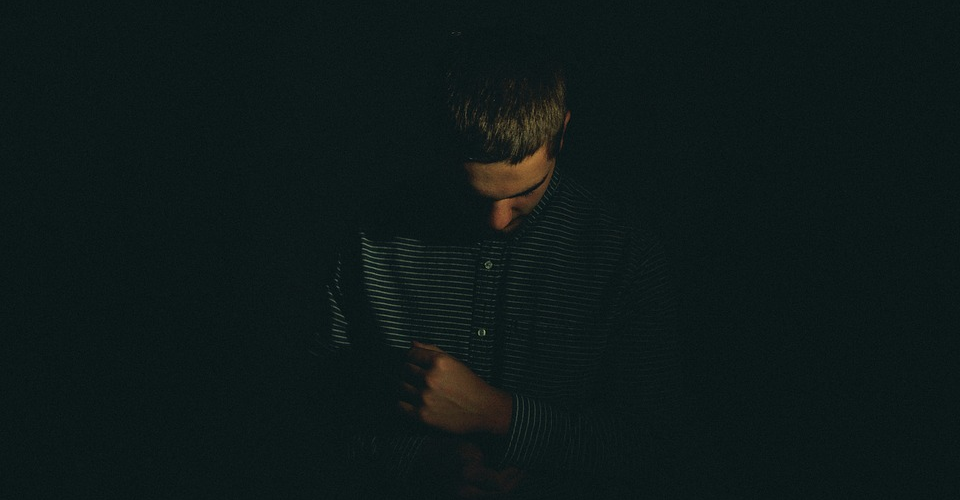
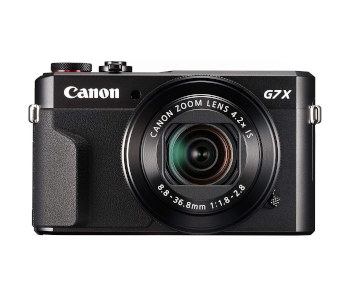 View on Amazon
View on Amazon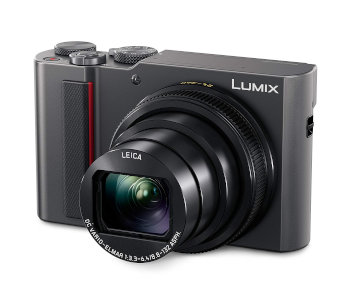 View on Amazon
View on Amazon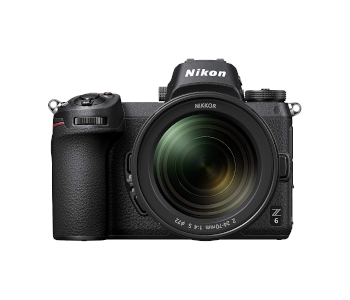 View on Amazon
View on Amazon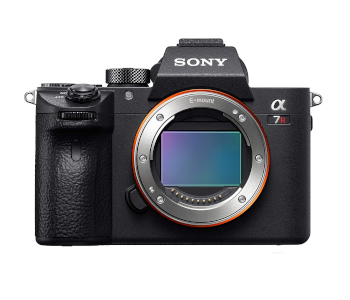 View on Amazon
View on Amazon